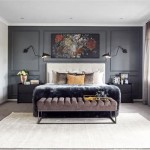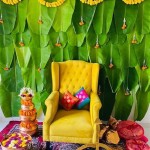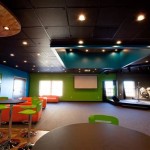Best Ideas To Decorate Your Room
Room decoration is a highly personalized endeavor, reflecting individual tastes, lifestyles, and budget considerations. Effective room decoration transcends mere aesthetics; it enhances functionality, promotes comfort, and fosters a sense of well-being. A well-decorated room is a functional and inviting space, contributing significantly to the overall quality of life. This article will explore several key ideas to guide the creation of a visually appealing and practically functional room.
Defining Your Style and Needs
Before embarking on any physical decoration, the initial and perhaps most critical step involves a thorough assessment of personal style preferences and functional needs. This foundational stage informs all subsequent decisions regarding color palettes, furniture selection, and decorative accents. Ignoring this step can lead to a disjointed and unsatisfying final result.
Begin by identifying personal stylistic inclinations. Are you drawn to minimalist aesthetics characterized by clean lines and uncluttered surfaces? Or do you gravitate towards bohemian styles, embracing a vibrant mix of textures, patterns, and globally-inspired elements? Perhaps a traditional style, emphasizing classic furniture pieces and muted color schemes, better aligns with your taste. Magazines, online platforms like Pinterest and Houzz, and even personal observations of friends’ homes can provide valuable inspiration. Creating a mood board, either physically or digitally, can consolidate visual references and clarify the desired aesthetic.
Simultaneously, consider the room's primary function. Is it a bedroom, a living room, a home office, or a multipurpose space? The room's intended use will dictate the type of furniture required, the optimal layout, and the necessary storage solutions. For example, a bedroom prioritizes comfort and relaxation, requiring a comfortable bed, adequate storage for clothing, and potentially a reading nook. A home office, conversely, demands a functional desk, an ergonomic chair, and sufficient lighting for productivity.
Furthermore, assess the existing features of the room. Consider the natural light available, the size of the room, the architectural details, and any existing furniture pieces that will be retained. Working with the existing elements, rather than against them, can streamline the decoration process and result in a more cohesive design. For instance, a room with large windows should capitalize on natural light, while a small room might benefit from light-colored walls and minimalist furniture to create the illusion of spaciousness.
Strategic Color Palette Selection
Color profoundly impacts the mood and atmosphere of a room. Selecting a strategic color palette is paramount to achieving the desired ambiance and creating a visually harmonious space. The chosen colors should reflect personal preferences while also considering the room's function, size, and natural lighting conditions.
Begin by considering the psychological effects of different colors. Cool colors like blue, green, and lavender tend to evoke feelings of calmness and serenity, making them suitable for bedrooms and relaxing spaces. Warm colors such as red, orange, and yellow can create a sense of energy and excitement, making them appropriate for living rooms and dining areas. Neutral colors like white, gray, and beige offer a versatile backdrop that can be easily complemented by accent colors.
A common approach to color palette creation is the 60-30-10 rule. This rule suggests dedicating 60% of the room to a dominant color, 30% to a secondary color, and 10% to an accent color. The dominant color typically appears on the walls and large furniture pieces. The secondary color can be incorporated through upholstery, curtains, and rugs. The accent color adds pops of visual interest through decorative accessories such as pillows, artwork, and lamps.
When selecting colors, consider the room's natural lighting. Rooms with abundant natural light can handle bolder and darker colors, while rooms with limited natural light may benefit from lighter and brighter shades to maximize illumination. Additionally, consider the existing furniture pieces. Select colors that complement the existing furniture and create a cohesive visual scheme. Paint samples should be tested on the walls under different lighting conditions to ensure the colors appear as intended.
Optimizing Furniture Layout and Functionality
The arrangement of furniture significantly impacts the flow, function, and aesthetic appeal of a room. An optimal furniture layout maximizes the use of space, promotes comfortable movement, and creates focal points that draw the eye. Careful consideration should be given to the size and scale of furniture pieces, ensuring they are proportionate to the room's dimensions.
Prioritize functionality when arranging furniture. In a living room, the seating arrangement should facilitate conversation and interaction. Consider placing sofas and chairs facing each other, creating a comfortable and inviting space for socializing. In a bedroom, the bed should be the focal point, ideally positioned against the longest wall. Nightstands should be placed on either side of the bed for convenient access to lamps and personal items. In a home office, the desk should be positioned to maximize natural light and minimize distractions.
Consider the traffic flow within the room. Ensure there is ample space to move freely between furniture pieces without bumping into obstacles. Avoid placing furniture in walkways that obstruct movement. A general rule of thumb is to leave at least 36 inches of walking space between furniture pieces. This ensures comfortable and unimpeded movement throughout the room.
Utilize the principles of balance and symmetry when arranging furniture. Symmetry involves mirroring furniture arrangements on either side of a focal point, while asymmetry involves creating a balanced arrangement without mirroring elements. Both approaches can be effective, depending on the room's style and layout. Experiment with different layouts to find the arrangement that best suits the room's dimensions and functional requirements. Utilize online room planning tools or create physical sketches to visualize different furniture arrangements.
Incorporating Decorative Accents and Personal Touches
Decorative accents add personality, visual interest, and character to a room. These elements, ranging from artwork and textiles to plants and lighting, transform a functional space into a personalized and inviting environment. Thoughtful selection and placement of decorative accents can elevate the overall aesthetic and reflect individual tastes.
Artwork is a powerful tool for adding visual interest and expressing personal style. Select artwork that resonates with your aesthetic preferences and complements the room's color palette. Consider the size and scale of the artwork, ensuring it is proportionate to the wall space. A large-scale piece can serve as a focal point, while a gallery wall can create a visually dynamic display of smaller pieces. Frame artwork appropriately to enhance its presentation and protect it from damage.
Textiles, including rugs, curtains, and pillows, add texture, warmth, and comfort to a room. Select textiles in a variety of materials, patterns, and colors to create visual interest and depth. A rug can define a seating area and add warmth underfoot. Curtains can soften the edges of windows and provide privacy. Pillows can add pops of color and texture to sofas and chairs. Mix and match different textures and patterns to create a layered and inviting aesthetic.
Plants introduce natural elements into the room, adding life, color, and freshness. Select plants that thrive in the room's lighting conditions and require minimal maintenance. Potted plants can be placed on shelves, tables, or the floor. Hanging plants can add vertical interest and create a sense of height. Plants not only enhance the aesthetic appeal of the room but also improve air quality.
Lighting plays a crucial role in setting the mood and enhancing the functionality of a room. Combine ambient lighting, task lighting, and accent lighting to create a well-lit and versatile space. Ambient lighting provides overall illumination, task lighting provides focused light for specific activities, and accent lighting highlights architectural features or decorative elements. Experiment with different types of light fixtures, including lamps, chandeliers, and sconces, to create a layered and inviting lighting scheme.
Maximizing Storage Solutions
Effective storage solutions are essential for maintaining a clutter-free and organized room. Maximizing storage space not only enhances the aesthetic appeal of the room but also improves its functionality and comfort. Selecting storage solutions that are both practical and visually appealing is key to creating a well-organized and stylish space.
Vertical storage maximizes the use of available space, particularly in small rooms. Shelving units, tall bookcases, and wall-mounted cabinets provide ample storage without taking up valuable floor space. Utilize vertical storage to display books, decorative items, and personal belongings. Consider open shelving for frequently used items and closed shelving for items that need to be concealed.
Multifunctional furniture offers storage solutions that are seamlessly integrated into the room's design. Ottomans with hidden storage compartments, coffee tables with drawers, and beds with built-in storage provide discreet and convenient storage options. Multifunctional furniture is particularly useful in small spaces where maximizing every square inch is crucial.
Baskets and bins are versatile storage solutions that can be used to organize a variety of items, from toys and blankets to books and magazines. Select baskets and bins that complement the room's style and color palette. Label each container to easily identify its contents. Baskets and bins can be placed on shelves, under tables, or in closets to create a clutter-free and organized space.
Closet organization systems optimize the use of closet space, providing efficient storage for clothing, shoes, and accessories. Install adjustable shelves, hanging rods, and drawers to customize the closet to your specific needs. Utilize closet organizers such as shoe racks, belt hangers, and tie racks to maximize storage capacity and keep items neatly organized. A well-organized closet not only saves space but also makes it easier to find and access items.
By implementing these ideas, any room within a residence can undergo a transformative process, resulting in a space that is both aesthetically pleasing and functionally efficient. The key lies in a thoughtful and personalized approach, reflecting individual preferences and needs throughout the decoration process.

How To Decorate Your Bedroom In Bohemian Style College Decor Dorm Room Wall Walls
What Are Some Cool Ideas For Decorating My Room Quora

Room Decorating Ideas To Motivate Your Space

410 Best Diy Bedroom Decor Ideas

20 Best Dorm Room Ideas And Decor For 2025

Best Bedroom Wall Decoration Ideas Bedsland Furniture

20 Diy Room Decor Ideas For The Win Unique With S
:max_bytes(150000):strip_icc()/315426138_524432282910251_7749664744188654425_n1-175dc3f30e3c4a7d9cab6fd858aef447.jpg?strip=all)
21 Aesthetic Room Ideas That Are Super Cozy

Take A Look At These Diy Room Decor Ideas And Transform Your Home

Best Bedroom Decor Ideas Forbes Home
Related Posts







